Kenny Dalglish took the reigns in turbulent times to steer the 2011/12 side to silverware and while it was not all smooth sailing, the King helped usher the club into a new era. Jeff Goulding tells the story.
We’re in the summer of 2011 now. The dark days of Hicks and Gillett and the ever-present stench of impending administration are behind us. However, the bad taste left by Roy Hodgson’s inexplicable five-month Anfield reign still lingers.
Despite the arrival of King Kenny, the big money signings of Luis Suarez, Andy Carroll, Jordan Henderson and Stewart Downing, it seemed nothing could shake that particular bad dream from our minds. I have friends who simply refuse to talk about it. In some football version of George Orwell’s Newspeak, they act like it never happened. They have declared Roy a non-person.
Whatever it was that inspired Christian Purslow to approach the doyen of Fleet Street and invite him to take over from the European Cup winning Spaniard, Rafa Benitez, I will never know.
As decisions go, it proved to be as ill-advised as describing yourself as ‘the Fernando Torres of finance’ to a group of supporters for whom finance would never mean more than trophies, and who viewed such boasts as a death knell to credibility.
Purslow would eventually go the same way as Hodgson. As would Damien Comolli; but not before the former Spurs Director of Football had blown through a considerable wedge of John W Henry’s cash. While the signings of Suarez and Henderson would prove fruitful, the capture of Carroll and Downing would not. In total, those four players cost a combined £92.3 million.
So, whereas Purslow and Hodgson had been routinely wide of the mark, Comolli was a bit more hit and miss. After the horrors of the end of the Benitez era and the courtroom tangles that ensued, the club was at last beginning to recover.
Chaos to Silverware
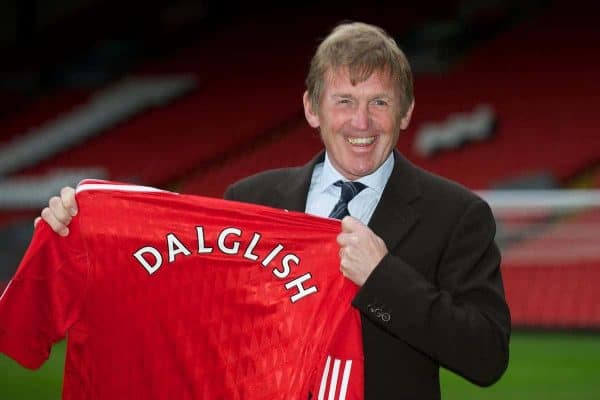
Liverpool’s own ‘fifth column’ of Ian Ayres, Purslow and Martin Broughton, seemingly acting in concert with a bunch of ‘internet terrorists’ – as Thomas O Hicks would call the Spirit of Shankly group – had fought valiantly and successfully to oust a couple of outlaws from the west.
That ushered in the age of New England Sports Ventures – now Fenway Sports Group – and eventually the appointment of Kenny Dalglish as manager.
The latter came after a miserable run of results under Roy Hodgson which led one caller on LFCTV to tell John W Henry and Tom Werner that they felt the people in charge of the club didn’t understand it and that nobody was looking out for the supporters.
Shocked by her honesty, Werner promised prompt action, and Hodgson was cleaning out his locker at Melwood in no time at all. Before long the owners were on the phone to Dalglish.
I’ve recently seen Kenny’s second coming described as ‘ill-fated.’ Maybe it was, but that assessment seems harsh and driven by hindsight bias.
Dalglish was given a mission when he arrived in January 2011. He had to stabilise the club, put smiles back on faces and prepare the place for a new era. Many pointed out what a huge gamble it was for him personally. If he failed, his status as a living legend, no less, was at stake.
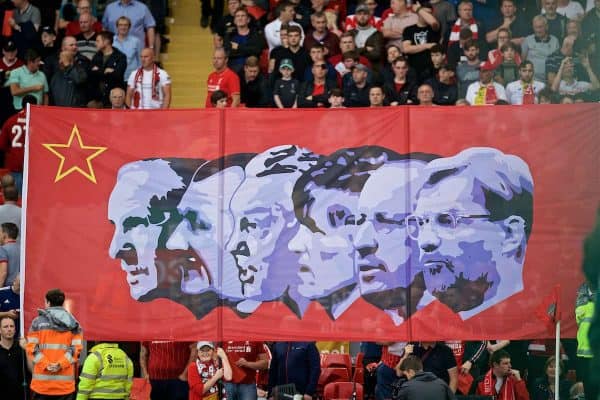
His reply was to point out that a refusal to help when asked may jeopardise his standing among supporters even more. And, so it came to pass that the King returned to his throne. And, in one short-lived moment in the sunshine, he reminded us all what it was to be a Liverpool supporter.
There would be trips to Wembley, again. After years spent at Cardiff’s Millennium Stadium, the FA Cup and League Cup finals would once again be contested at England’s newly rebuilt national stadium.
There would, of course, be some low points among the highlights. After all, that’s also part of the deal, when it comes to following our club. We climb the hill our way, and sometimes we take the most difficult route. There would be damaging controversy, involving Liverpool’s Luis Suarez and some questionable decision making by the squad and the club hierarchy.
But, in the end, there would be silverware. And, despite what the money men may say, in the end that’s what football is really all about.
So, here’s how it all happened.
Mixed Fortunes
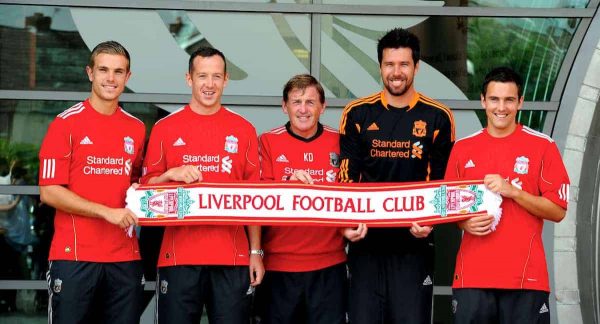
The Reds started the summer off by clearing out piles of deadwood. The list of players leaving the club included Paul Konchesky, Chris Mavinga and Milan Jovanovic was not such a who’s who, as a who?
The problem was they would replace it with enough timber to rebuild Goodison Park. Charlie Adam’s corners may well have been worth the transfer fee, as Alex Ferguson said, but his penalty in the League Cup final shootout certainly wasn’t. Rumour has it that it has now left the solar system and is journeying through interstellar space.
However, we did see the return of Craig Bellamy. The Welshman arrived on a free transfer from Manchester City. This would be his second spell at the club, the first came under Rafa Benitez. Fortunately, his skill with a golf club – which he wielded to comic effect at a training camp in Spain – did no permanent damage to John Arne Riise or Bellamy’s career.
Most of us were looking forward to a season of progress as 2011/12 got underway. Liverpool were starting to feel like Liverpool again, and even if optimism was fragile, it was definitely on the way back.
Our opening four games, which included three wins and a draw, seemed to justify our sense of hope. However, successive defeats away to Stoke and Tottenham were a reminder of just how far we had fallen. The latter, a 4-0 drubbing at White Hart Lane, was particularly chastening.
Dalglish responded to those setbacks by taking the Reds on an 11-game unbeaten run, which took in a 2-0 victory over Everton, at Goodison Park. The game would prove to be a nightmare for the Blues. Only a season earlier, they had entertained thoughts of their bitter rivals entering administration and being relegated to the Smirnoff Ice Conference League, or whatever it’s called.
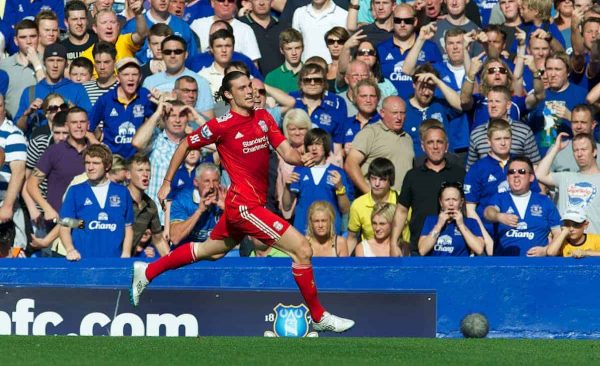
To see Liverpool returning to something approaching normality must have hit them hard. Not as hard as we would hit them in April 2012 though. But, more of that later.
The derby took place on what was the hottest October day on record. On the pitch, the atmosphere would reach boiling point in the 23rd minute, when Jack Rodwell was sent off for a full-blooded tackle on Luis Suarez. The Uruguayan proceeded to roll around the ground as if he had been struck by a sniper’s bullet. In the stands the Blues fumed and, on the touchline, David Moyes fizzed with rage. None of that stopped the referee from producing a red card though.
Phil Neville later told the Times, that “three years ago, that wouldn’t have been a foul.” I’m told that Martin Atkinson remains unapologetic that he failed to bring his time machine to Goodison.
Everton were now under siege, and they retreated virtually into their own 18-yard box. The Reds, though, were in a profligate mood. First, Dirk Kuyt missed a gilt-edged chance to put Liverpool in front from the spot just before half time. It was actually a decent penalty and a good save by Tim Howard, which turned out to be the first by a goalkeeper in a Merseyside derby.
Then, Charlie Adam hit the crossbar and suddenly the game had the words ‘one of those days’ written all over it. The second half began as the first had finished, with Everton camped inside their own half and desperately praying for a point.
Sadly, for them and happily for the Reds, Andy Carroll had other ideas. With a stroke of his left foot, the £35 million man, scored his first league goal for Liverpool. It came in the 71st minute. Everton barely flickered in response and 11 minutes later Luis Suarez added the Reds’ second and it proved enough to take the points back to Anfield.
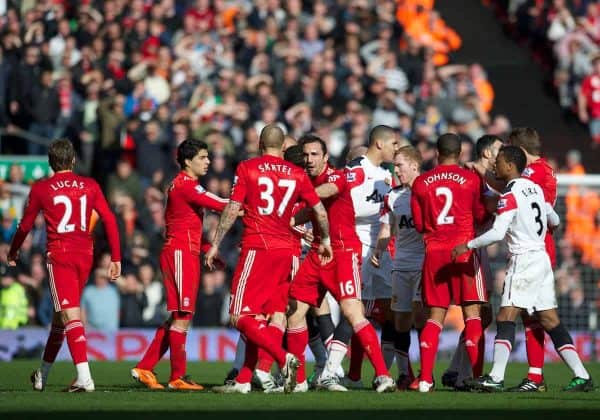
Amongst that 11-game streak came a moment of huge controversy. It happened in a match against Manchester United at Anfield. The game finished 1-1, but the scoreline will forever be overshadowed by an incident between Luis Suarez and Patrice Evra.
During a coming together in the penalty area, Evra alleged that Suarez racially abused him. The resultant FA inquiry concluded with Suarez being banned for eight games. The Liverpool squad and the manager threw their weight of support behind the Uruguayan. However, their solidarity was interpreted by some as misjudged and even as overt tolerance of racism by others.
It certainly wasn’t the latter. The decision by the squad to wear t-shirts in support of Suarez, before a game against Wigan Athletic at the DW Stadium, was more an act of support for a player they believed was innocent.
However, there is an argument that the club should have anticipated the inevitable attacks that came their way. Perhaps they could have advised their employees against such a public display of solidarity, at least until the investigation was concluded.
Only Luis and Patrice know what really happened during that moment. The facts remain that the FA found in favour of the Frenchman, and Liverpool could and probably should have handled the incident better. It would only serve to inflame the bitter rivalry between the two sets of supporters and cast Liverpool as the villains in the eyes of the media and rival supporters.
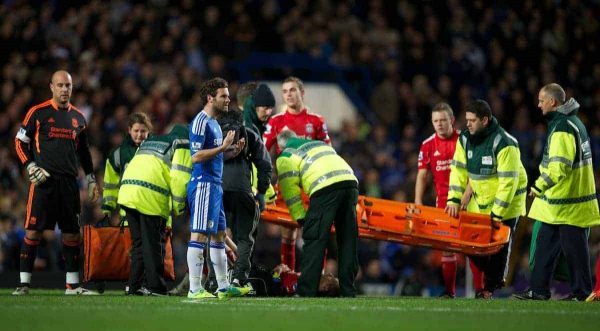
Nevertheless, despite all of that, Liverpool had progressed to the fifth round of the League Cup, with victories over Exeter City, Brighton and Hove Albion, Stoke City and Chelsea.
Their safe passage at Stamford Bridge had come courtesy of a 2-0 victory, thanks to goals from Maxi Rodriguez and Martin Kelly – his debut goal for the club.
Sadly, the win came at a terrible cost. Lucas Leiva ruptured his cruciate ligament in the game. The Brazilian would miss the remainder of the season.
A disappointing 1-0 defeat to Fulham, at Craven Cottage, preceded another run of five games without defeat before the Reds succumbed 3-0 to Manchester City at the Etihad and a 3-1 reverse to Bolton Wanderers at the Reebok.
The defeat to Bolton led to an extraordinary blast from Dalglish, who was furious with the performance turned in by his players: “They won’t be here much longer, if that’s the way they perform,” he roared.
Rivals & Cup Finals
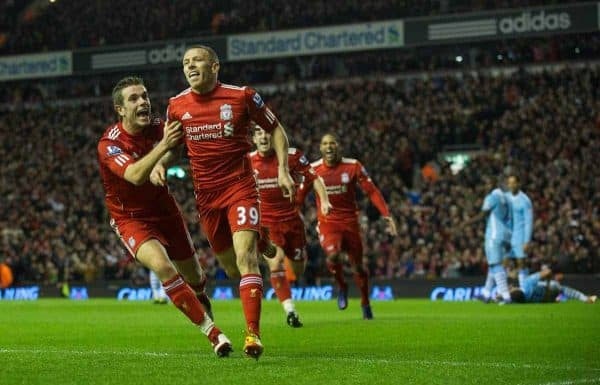
However, Liverpool continued to progress in the cup competitions. They smashed Oldham Athletic 5-1 in the 3rd Round of the FA Cup, before embarking on a two-legged League Cup semi-final against Manchester City.
Liverpool took a 1-0 first leg aggregate lead back to Anfield on the 25th January 2012. It proved to be a memorable game. City twice took the lead in a match that ended 2-2 and saw Liverpool off to their first cup final for five years.
At half time, the teams were deadlocked at 1-1, after a Steven Gerrard penalty cancelled out a Nigel de Jong opener. Then, in the 67th minute, Edin Dzeko put City 2-1 up. That levelled the tie overall, but Roberto Mancini’s men now had two away goals.
However, with the Kop roaring them on, Liverpool refused to lie down and in the 74th minute, Craig Bellamy created a moment that sent the Kop into ecstasy and brought tears to the eyes of the King.
His leveller on the night put Liverpool 3-2 up overall and the Reds were on the way to the final, at Wembley. Perhaps the realisation that he had once more delivered a showpiece occasion for the fans to enjoy overwhelmed him. Or, maybe Bellamy’s goal rekindled memories of cup finals past.
Whatever it was, Kenny’s trademark grin was gone and his face was now etched with raw emotion.
The Reds would now meet Cardiff in the final of the League Cup and the stage was set for a great day out at Anfield South, on the 26th February 2012. Before that though, Liverpool would have to face Manchester United once more, in the 4th Round of the FA Cup.
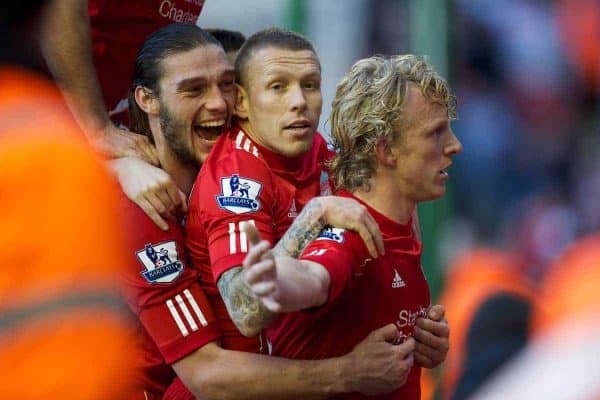
The game took place at Anfield, on the 28th of January. Liverpool took the lead early through Daniel Agger in the 21st minute. However, thanks to a strike by Ji-Sung Park, United were level six minutes before the break.
That set us all up for an incredibly tense finale and ultimately a victory delivered in the best way possible. It doesn’t get much better than a late winner against an old foe. In the 88th minute, Dirk Kuyt smashed the ball home to send the Liverpool supporters into delirium and the United fans back home with their tails between their legs.
In the league, Liverpool continued their journeyman-like progress. A 3-0 derby victory over Everton at Anfield provided a highlight, but it was in the cup competitions were Dalglish’s Reds proved relentless.
The Reds smashed Brighton 6-1 in the 5th Round of the FA Cup before dispensing of Stoke City in the 6th with a 2-1 win. That would set up a semi-final clash with none other than local rivals, Everton, at Wembley.
Remarkably, with Kenny at the helm, we had gone back to the future. Just as we had in the 1980s, Liverpool and Everton would once more be doing battle in the country’s capital. The city would empty on the 14th April and Wembley way would be a mass of red and blue.
However, before then there was the small question of the League Cup Final to contest.
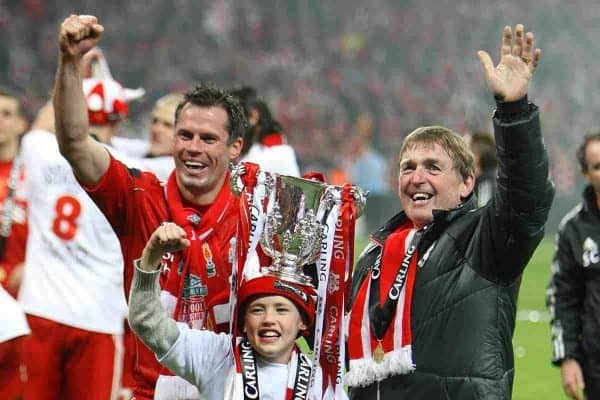
The game would get underway, with the whole nation – or at least those who didn’t support Liverpool – praying for a Cardiff win. They would be sorely disappointed, but not before the Welsh side had given the Reds a real scare.
Cardiff took the lead in the 19th minute through Joe Mason and the Reds would have to wait until the hour mark before Martin Skrtel levelled proceedings. However, anyone expecting Liverpool to take complete control of the game would be disappointed.
The match drifted into extra-time and more drama beckoned. Dirk Kuyt smashed in Liverpool’s second, after 108 minutes. There was joy amongst the Reds faithful. Surely that would be enough to settle the game.
It should have been. But Cardiff came again. And, with barely two minutes left of the regulation 30, Liverpool failed to deal with a corner and Ben Turner prodded the ball past a hapless Pepe Reina. That meant penalties, and they would all be taken in front of a vast bank of Reds.
Liverpool, though, had a formidable record in cup final penalties. This was to be their thirteenth penalty shootout in their history, and the had won ten of their previous twelve. They were about to lift their fifth trophy, won on penalties.
However, they couldn’t have got off to a worse start. Both Steven Gerrard and Charlie Adam missed Liverpool’s first two penalties. For Cardiff, Kenny miller missed but Don Cowie put the Bluebirds 1-0 up.

Kuyt then levelled and, amazingly, Rudy Gestede missed. That tied the shootout at 1-1. You could feel the contest swinging Liverpool’s way again. Downing put Liverpool in front, only for Peter Wittingham to level.
The pressure was back on the Reds. When Glen Johnson stepped up, Liverpool fans began chewing fingernails furiously. He dispatched it with ease – 3-2, Liverpool. That meant if Cardiff missed the next spot-kick, the Reds had won the cup.
In a strange twist of fate, the man who would take the fateful penalty was none other than Anthony Gerrard – the cousin of Liverpool skipper, Steven. He missed and immediately fell to his knees. The Liverpool end exploded as the players rushed towards their supporters in jubilation.
The Reds were winning trophies again, and there was another one to fight for. All we had to do was see off the Blues of Everton.
The King Turned the Tide
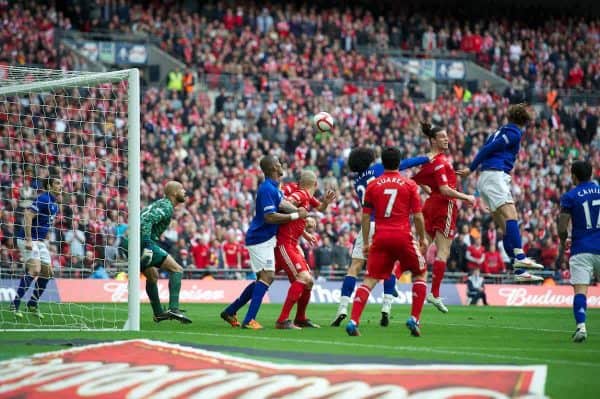
The FA Cup semi-final against Everton kicked off on the 14th April 2012, with an emotional and impeccably observed silence to mark the 23rd anniversary of the Hillsborough disaster. The atmosphere around Wembley was carnival-like and invoked memories of the old days.
Everton took the lead after a mix up between Daniel Agger and Jamie Carragher, which allowed Nikica Jelavic to steal in and score. The Everton end was a mass of flailing limbs and it looked like a bomb had gone off. Were they finally about to taste victory against Liverpool at Wembley, in a game that mattered?
It seemed so, until the 62nd minute. Sylvain Distin attempted a weak pass back from the halfway line, that was immediately ceased upon by Luis Suarez. The Uruguayan forward raced half the length of the pitch before putting the ball away with consummate ease.
Evertonians on the pitch and in the stands could see the writing on the wall. Supporters fell silent and players battened down the hatches. It was never going to be enough though. The Reds had become the Blues’ bogey side and would not be denied a place in another final.
In the 87th minute, Liverpool won a free-kick to the right of the Everton goal. Craig Bellamy whipped in a delightful cross, which was glanced home by the head of Andy Carroll. The score read 2-1 and now it was the Reds’ supporters who celebrated as if the cup was won.
Distin’s attempts to apologise to Everton fans at full time were waved away. In the Liverpool goal, Brad Jones, whose son had recently passed away, fell to his knees with his arms stretched out to the heavens. His eyes closed and tears in his eyes, he had fulfilled a dream to play for the Reds at Wembley.
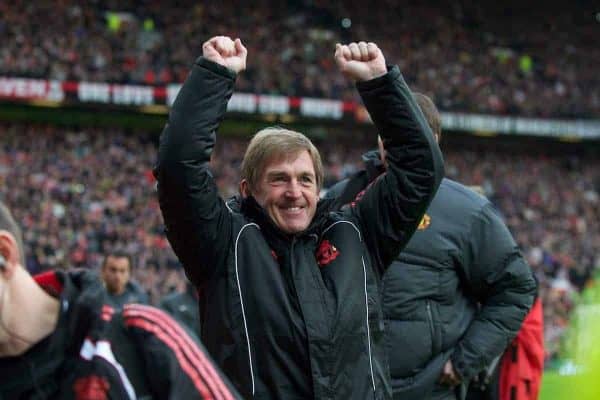
But amidst the joy and jubilation, there were cracks forming in the Dalglish juggernaut. Damian Comolli had been let go by FSG and Liverpool’s league form had slumped. The holy grail of top four and the lucrative Champions League would not be delivered for another season.
It’s possibly an indictment of modern football that even had Kenny’s Reds have beaten Chelsea in the FA Cup Final, in 2012, he would still have been sacked. That we lost that game 2-1, only meant the end of his reign was a little more painful than it should have been.
To us, it’s all about winning trophies. It was the same for Kenny too. However, for the club’s owners, they had much bigger ambitions than the League Cup and FA Cup.
We’d wait another seven years and see the back of another manager before the club would live up to the aspirations of its supporters and owners. However, during 2011/12, I believe it was a case of mission accomplished for Kenny Dalglish.
Liverpool supporters, after a torrid time, were smiling again. We could once more legitimately call Wembley, Anfield South.
And, thanks to the King, Brendan Rodgers would inherit a team in much better shape than the one Kenny did.
Liverpool, 2011/12
Manager: Kenny Dalglish
Captain: Steven Gerrard
Top Scorer: Luis Suarez (17)
Most Appearances: Jordan Henderson (48)
League position: 8th (52 points)
FA Cup: Runners-up
League Cup: Winners
Total games: 52
Games won: 26
Games drawn: 11
Games lost: 15
Clean sheets: 15 (overall)
Total goals: 80
Previous Seasons in this series: 1961/62, 1987/88, 2000/01, 2001/02
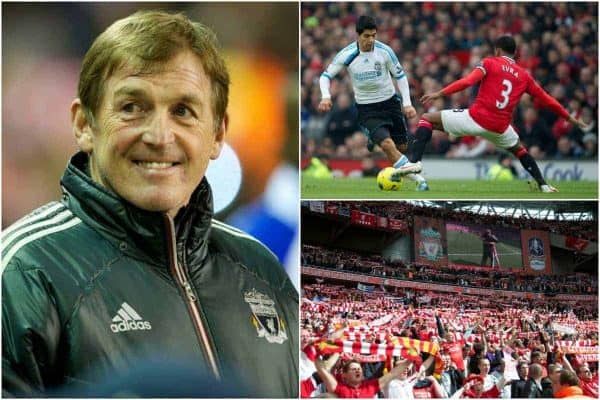

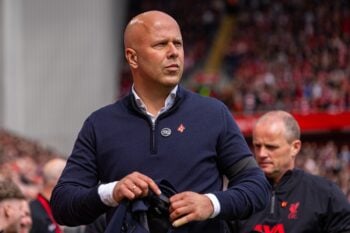
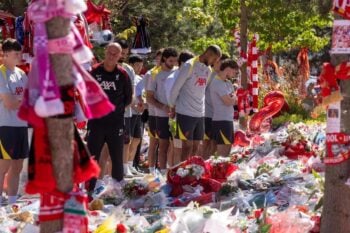
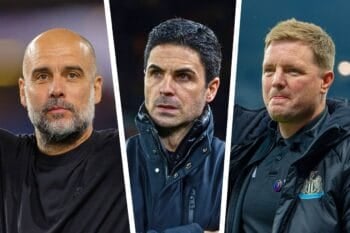

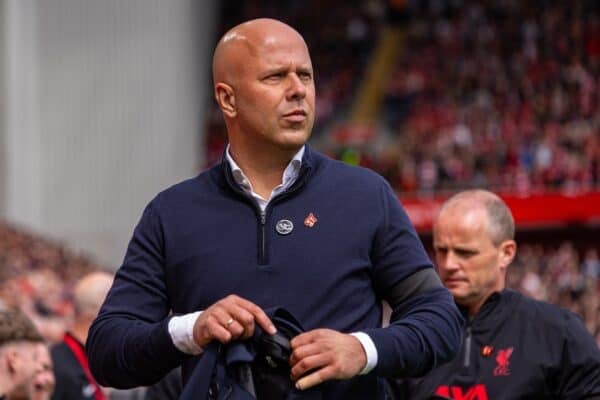
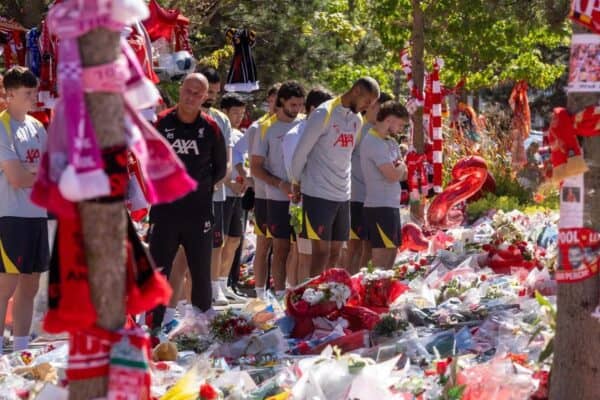
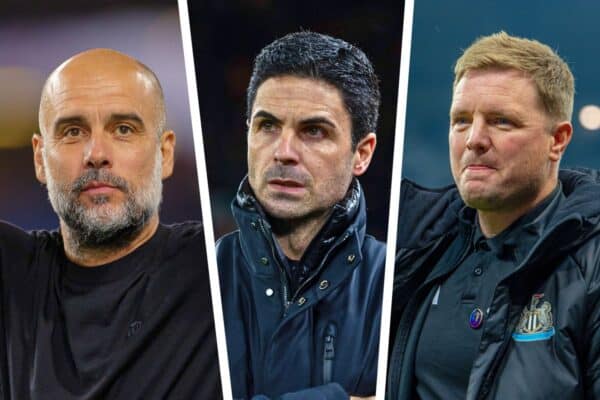









Fan Comments